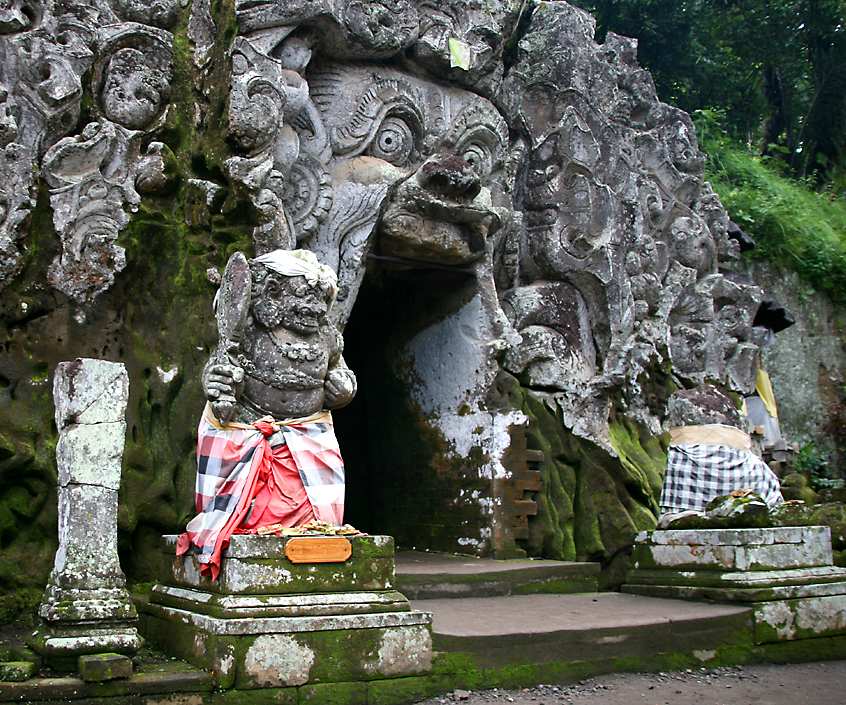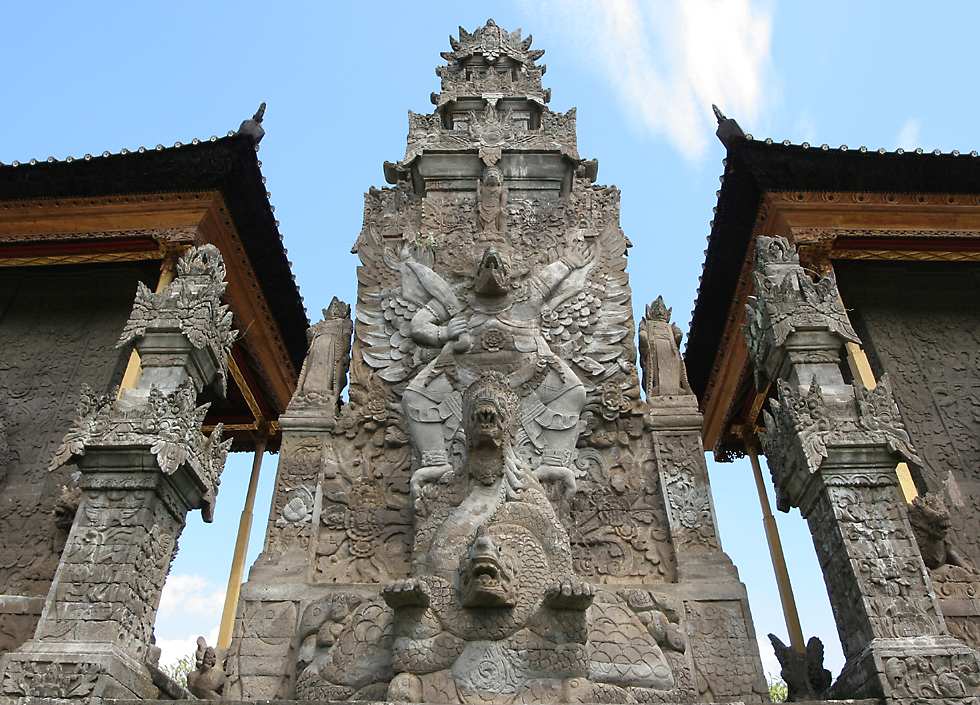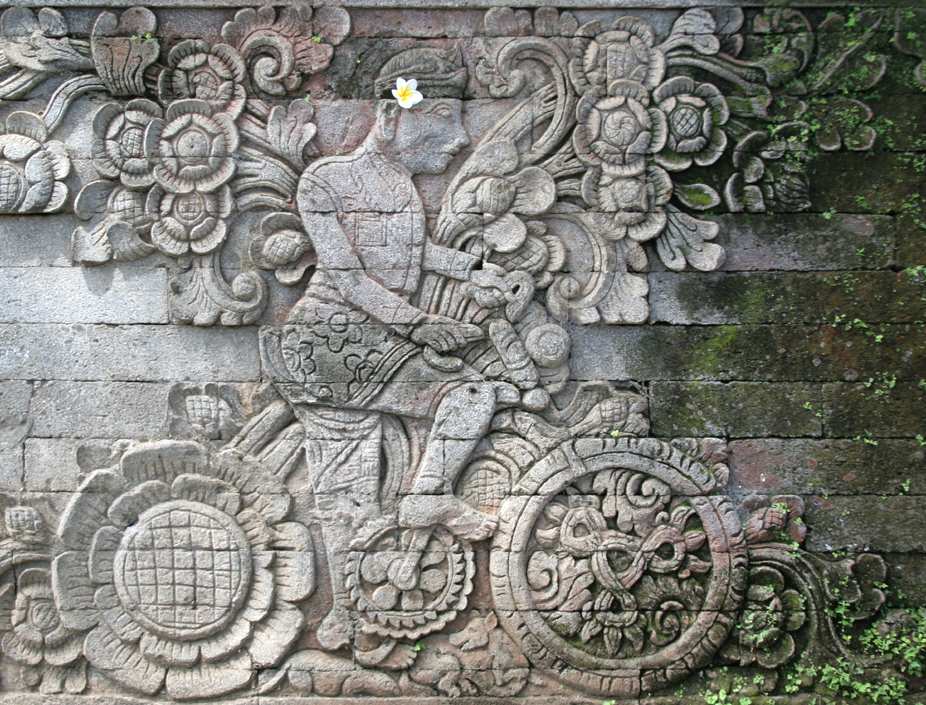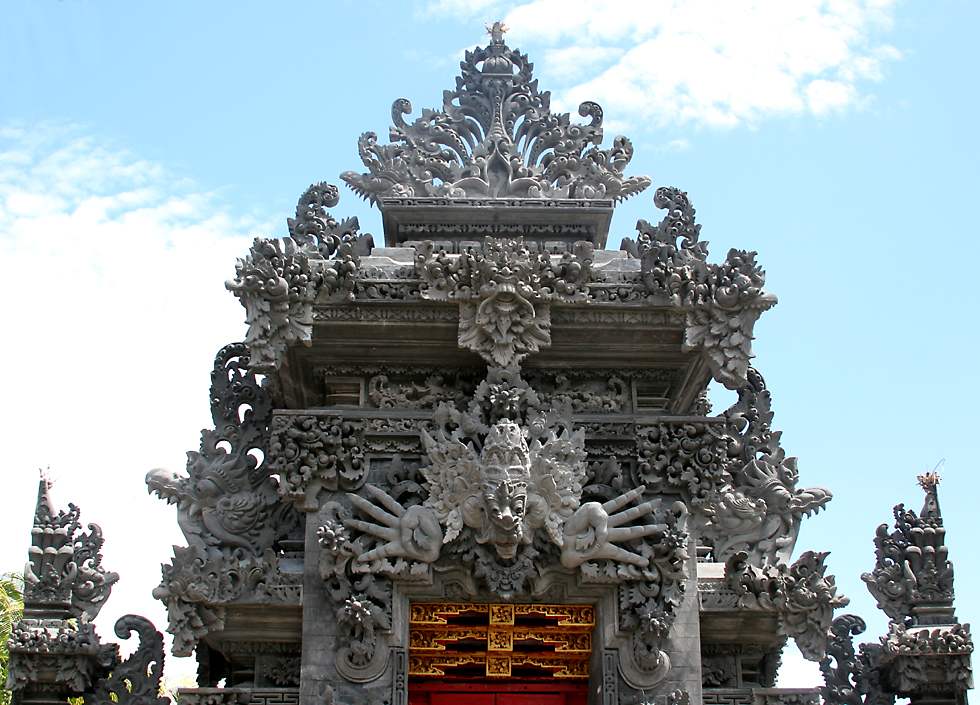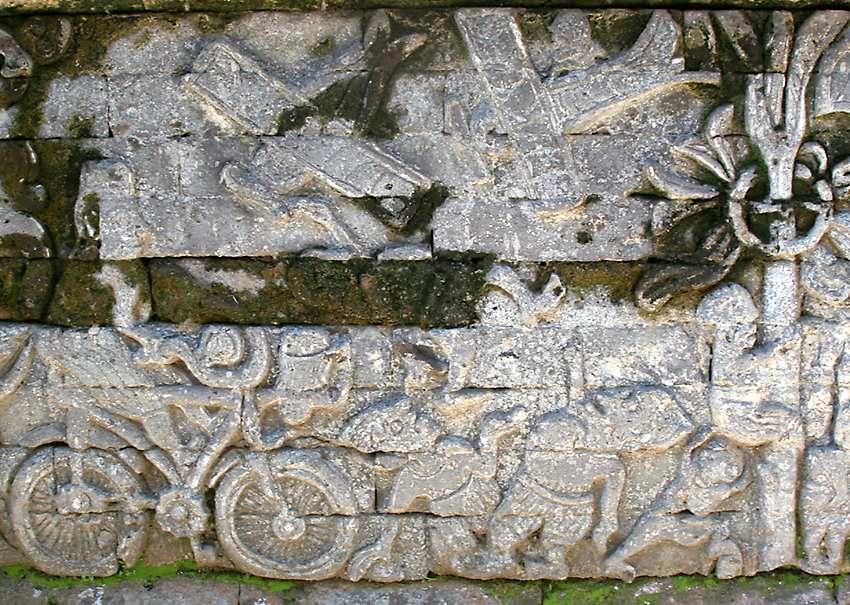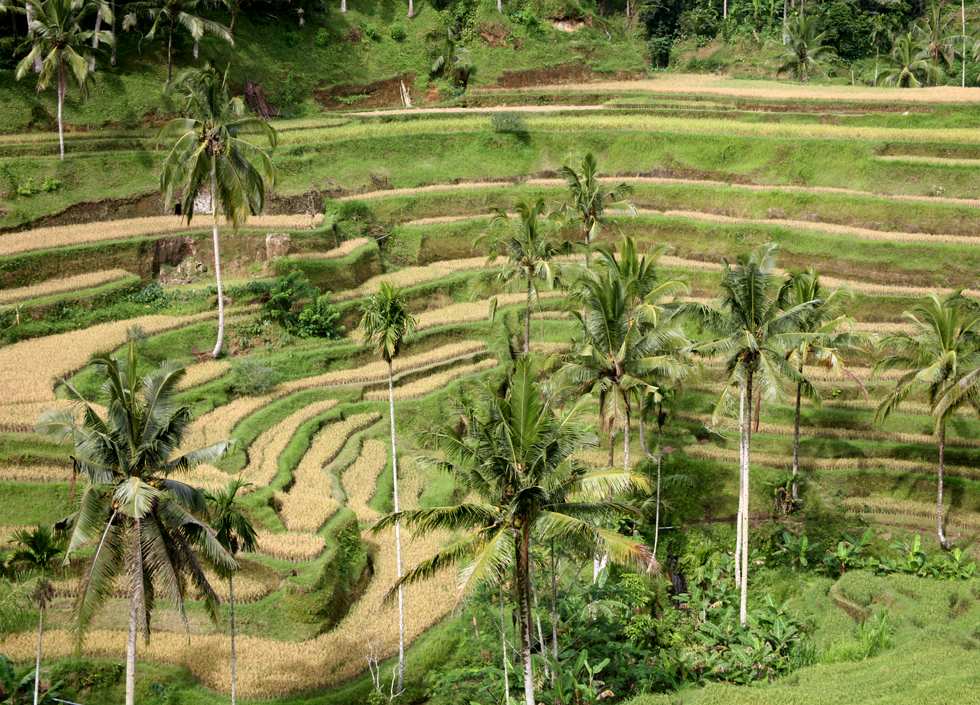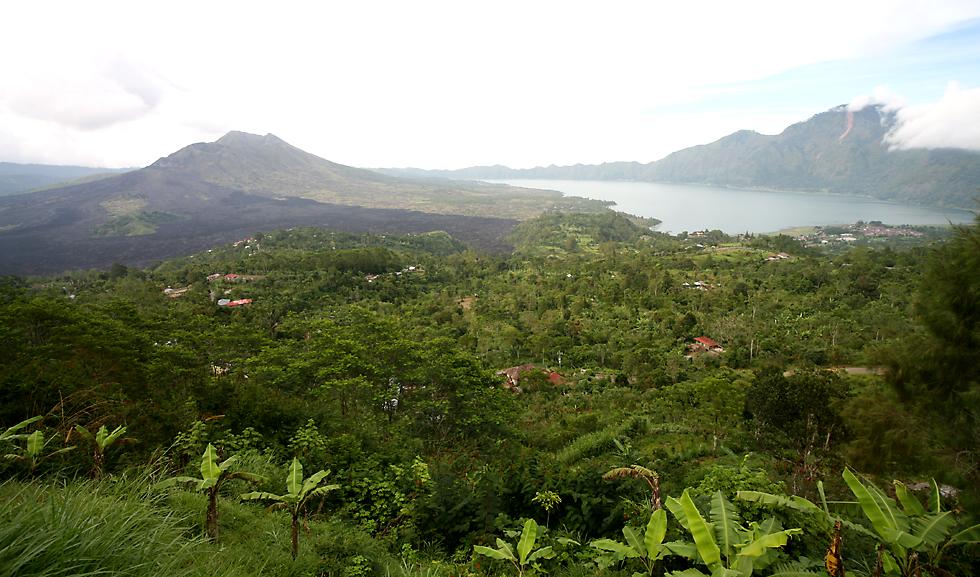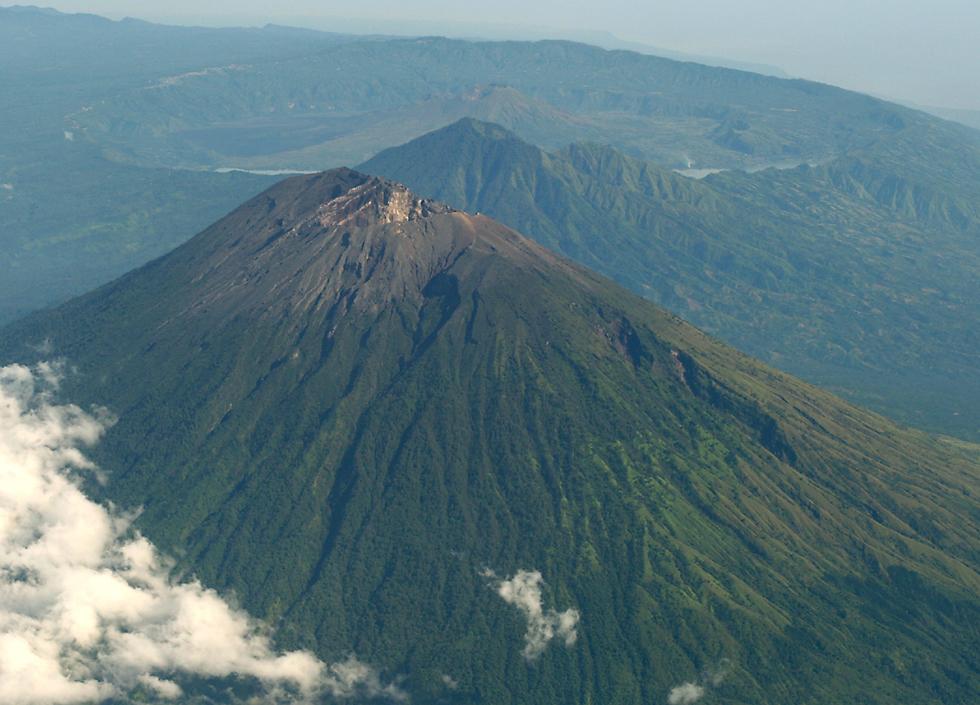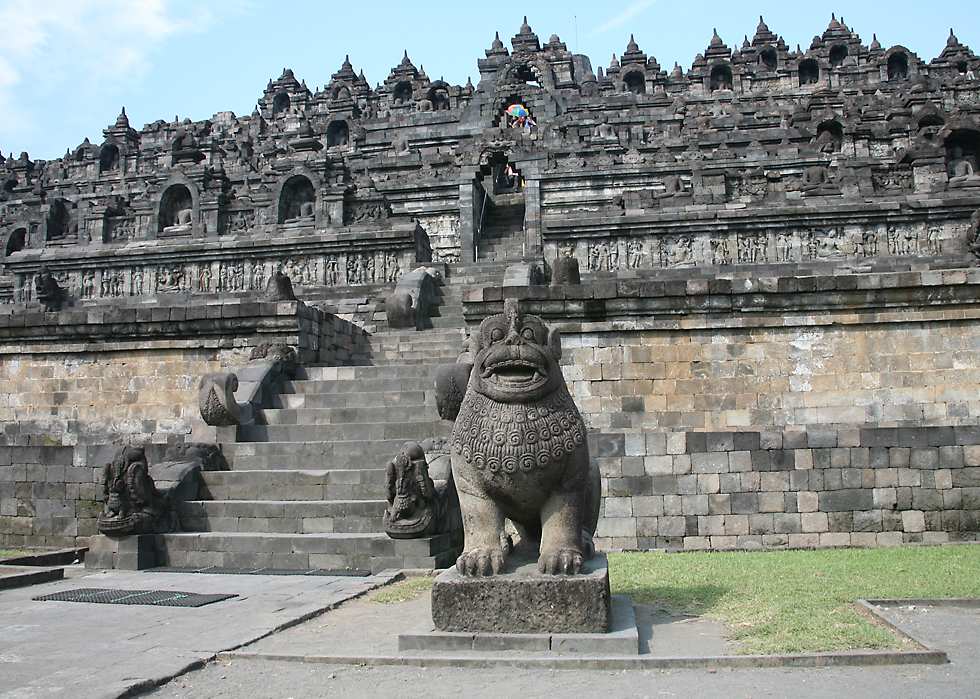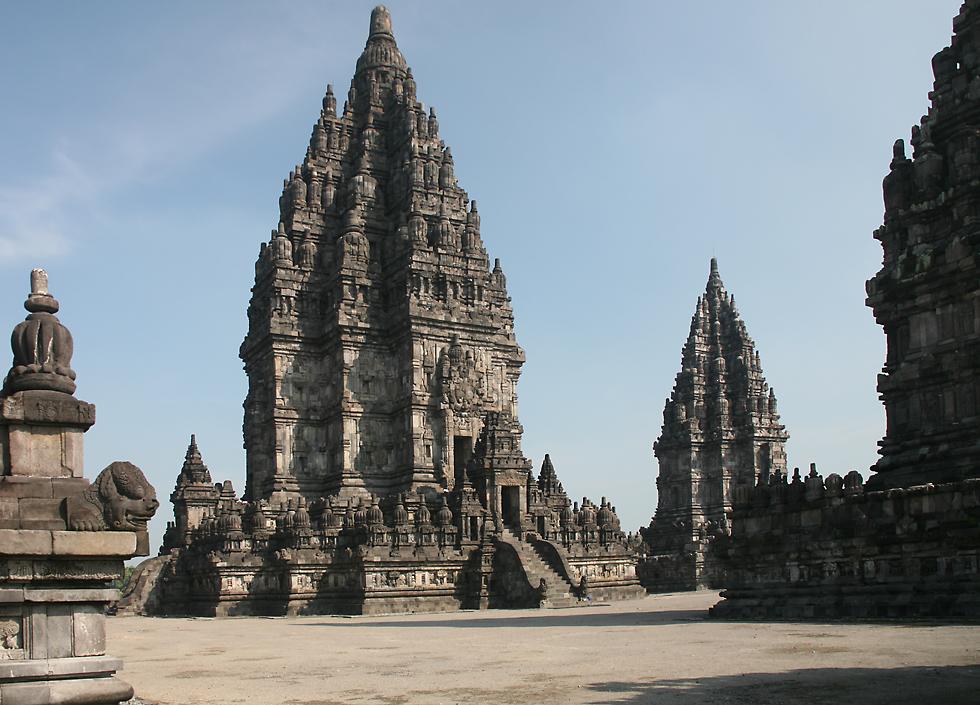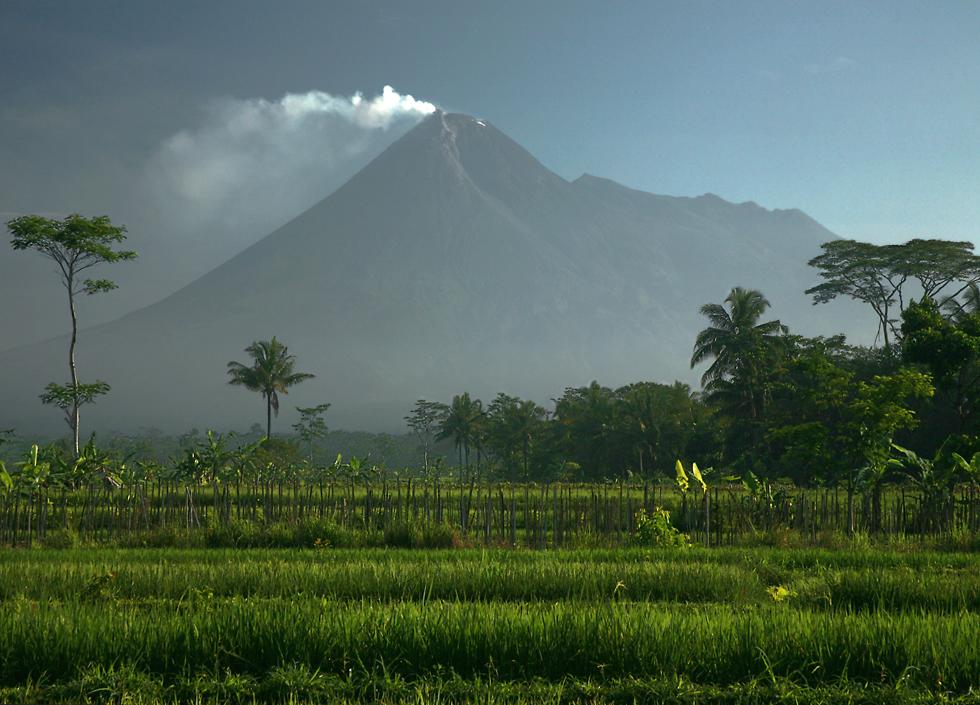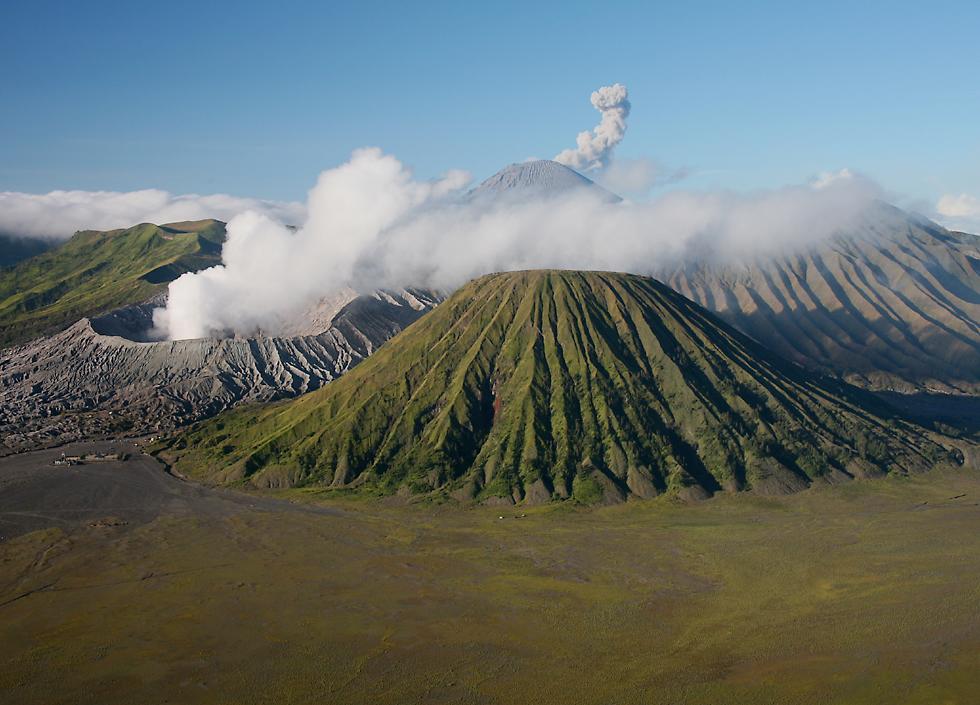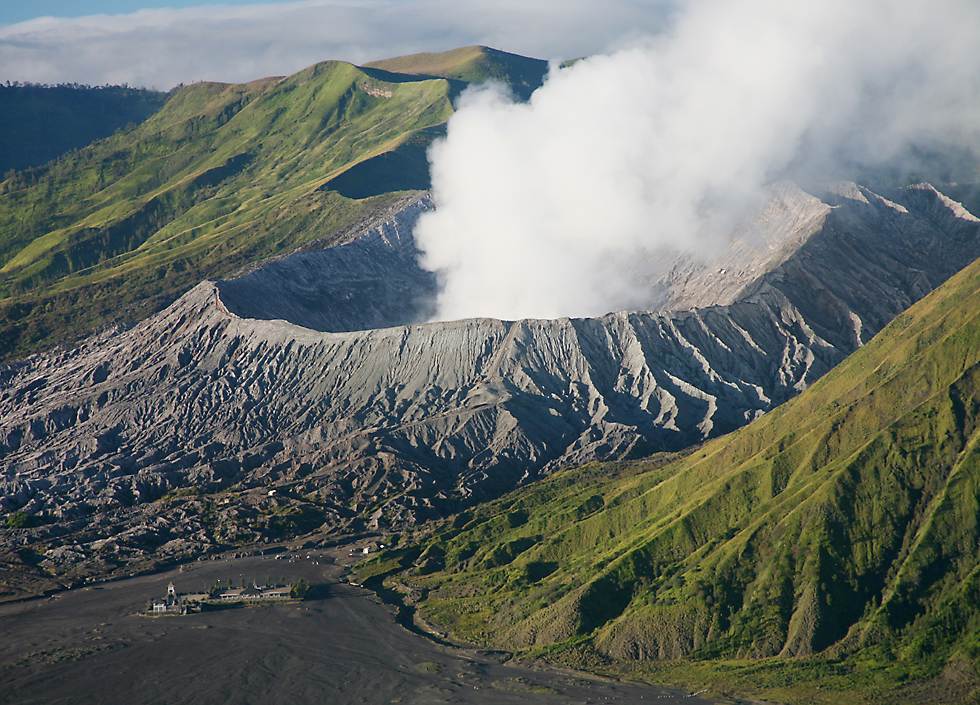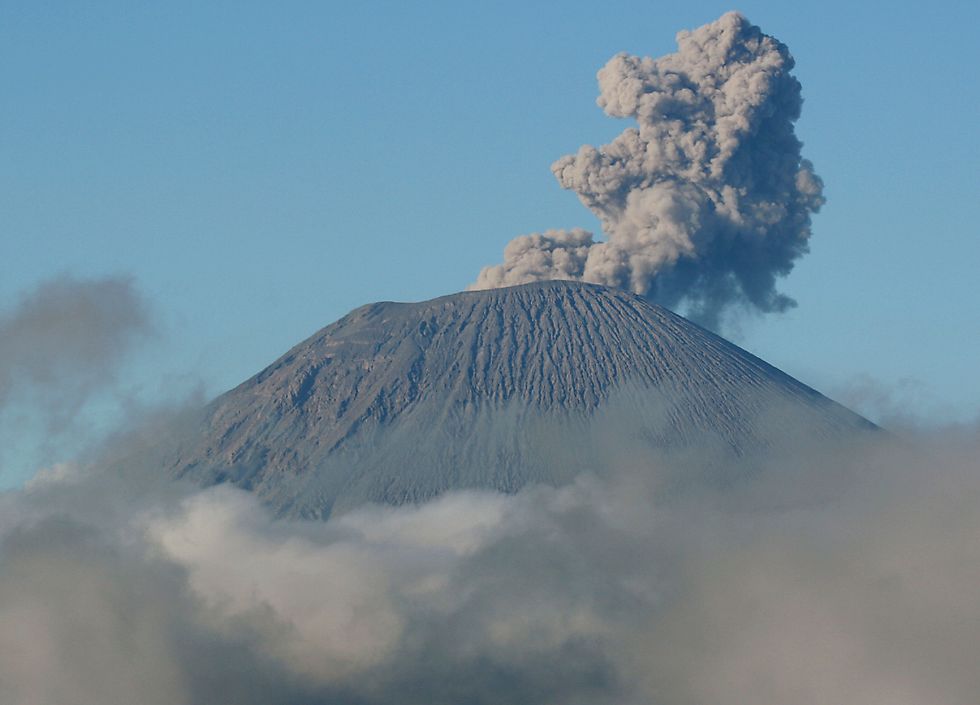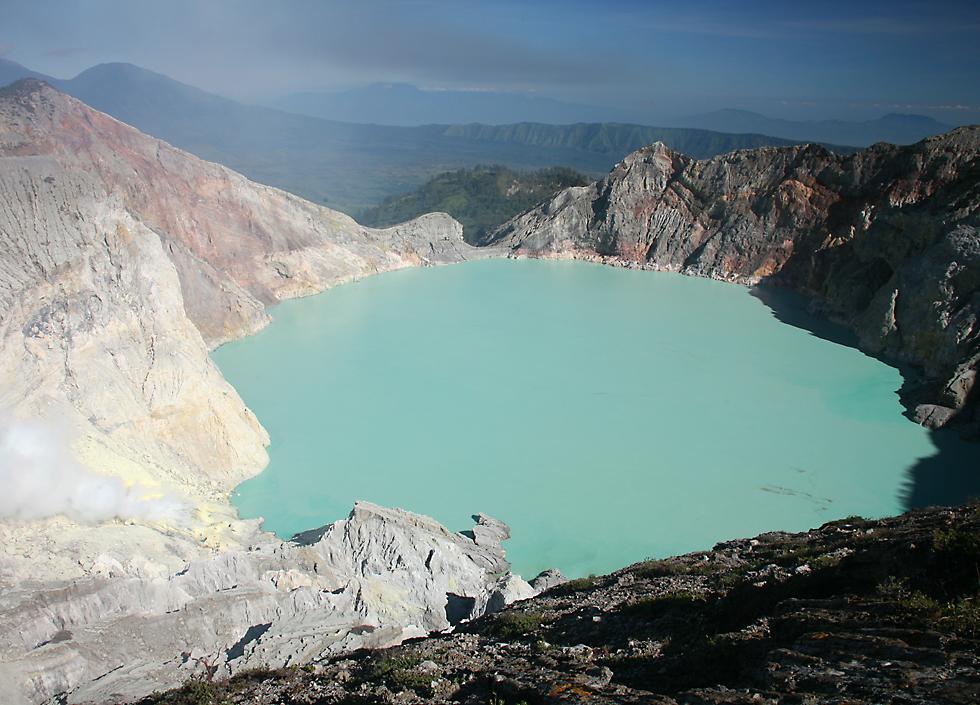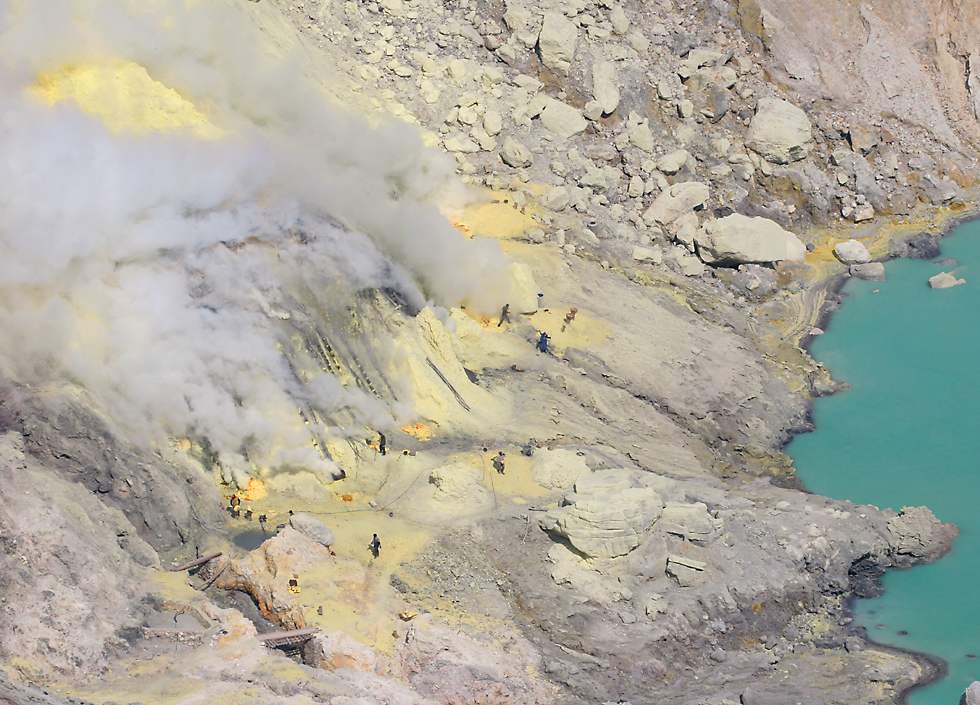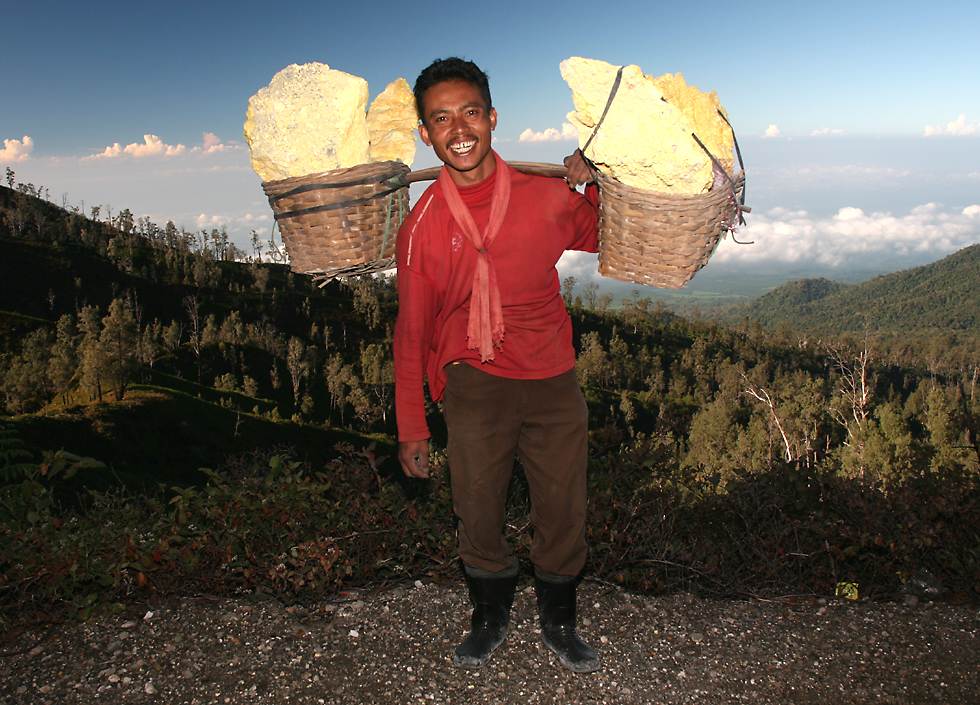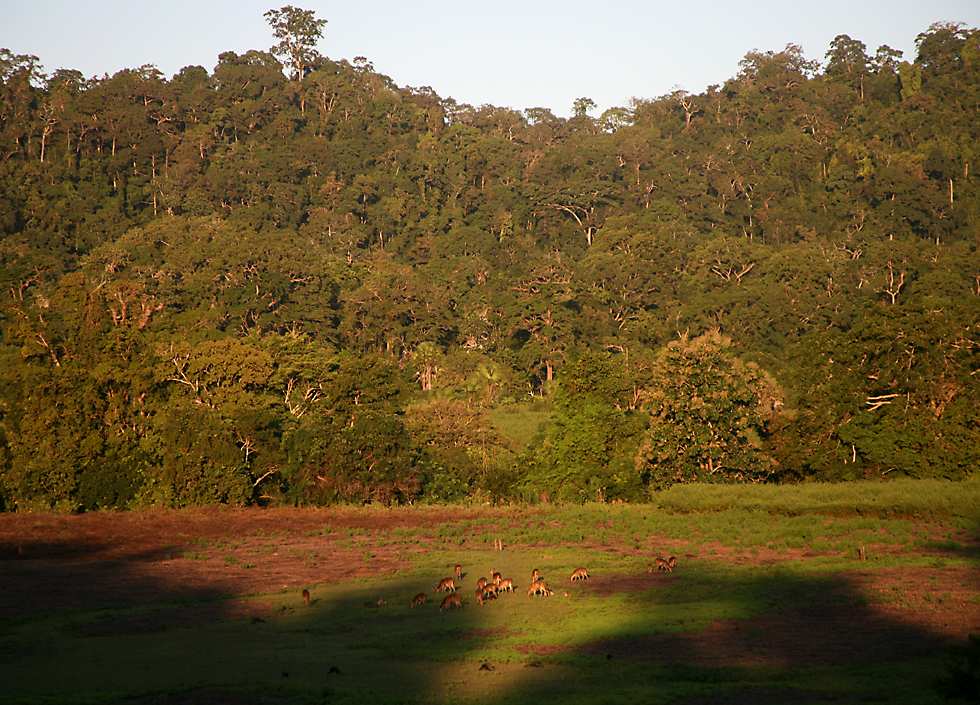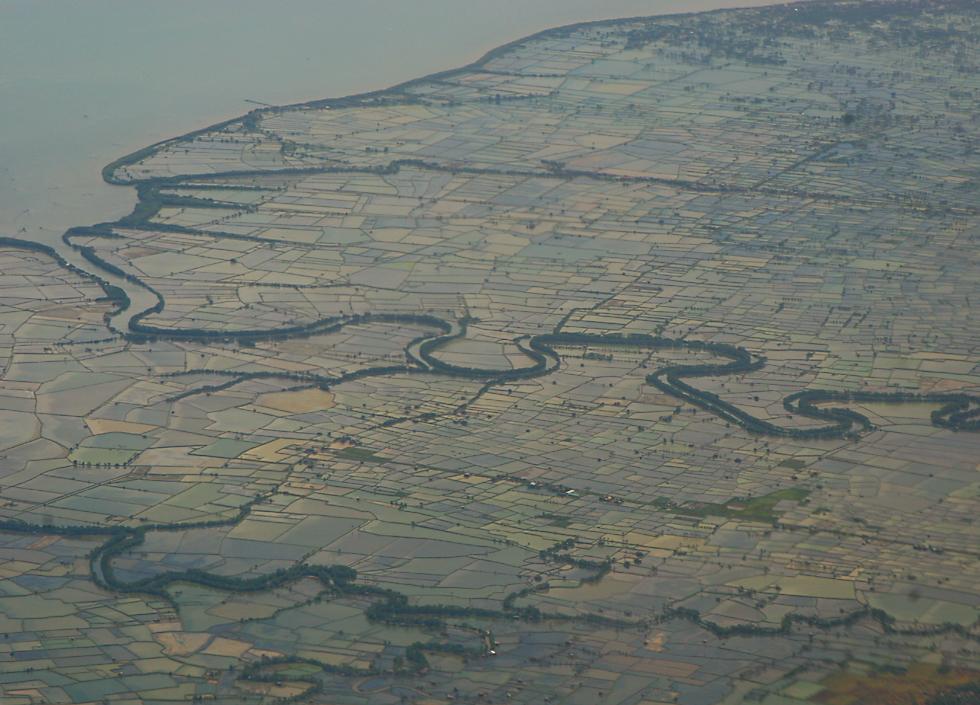Highlights of Indonesia
|
I visited Bali in the early 1990s, spending almost all of my time in the southern tourist trap of Kuta, surrounded by drunken Australians. I enjoy the sophisticated delights of Australian culture as much as anyone, but when I went to Bali again in 2007, I was determined to stay as far from Kuta as possible, so I spent my first night in the cultural center of Ubud. There are plenty of sites to see around Ubud, such as the Monkey Forest, one of several small sacred monkey forests in Bali, all of which have Hindu temples within them. |

|
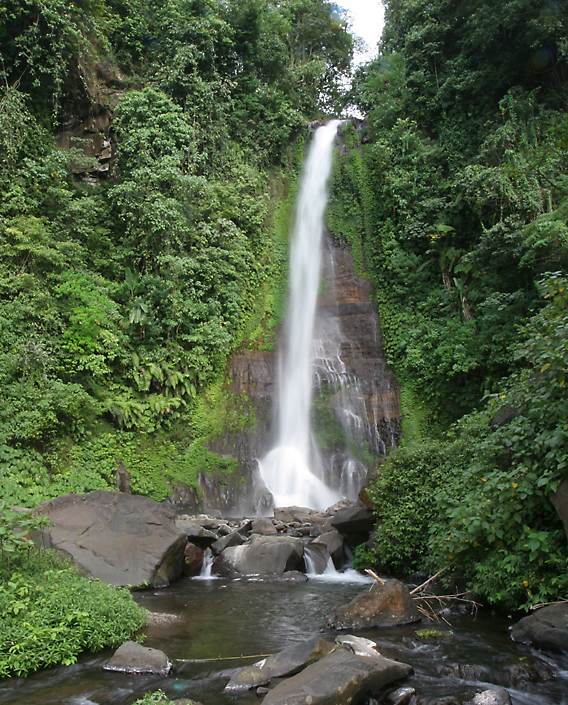
There are two sets of waterfalls near the town of Gitgit, as well as others scattered around other parts of the island. This is the lower Gitgit waterfall, which like Ubud monkey forest is another good location to see some of the area's insect life, in the form of brightly colored dragonflies and damselflies. There are also four large lakes in central Bali; I visited three of these, the best being the very attractive Danau Buyan, which has a road running high above it, affording excellent views of the lake and its surrounding area. |
|
Although I could easily have spent three weeks just in Bali, on this trip I also wanted to hit Java. I planned to avoid the cities as much as possible because of the pollution, traffic congestion and lack of compelling sights, but the long drive from Surabaya meant that it was already late when I arrived in the cultural center of Yogyakarta. I made the most of the situation by staying overnight and spending the next morning touring the kraton, the sultan's palace within a small walled city in the center of the modern city of Yogyakarta. As in Bali, devotees of great antiquity would be better off visiting Egypt, Mexico or Guatemala, since Yogyakarta and its kraton were only established in 1755. However it's a great place to see traditional Javanese palace architecture, and several times a week there are free cultural performances by dancers backed by a gamelan orchestra with singers, playing scenes from traditional epics. I'm not quite sure of what's going on in this photo, but I think of it as "sweaty girls with sharp knives", and the music was certainly very appealing. |
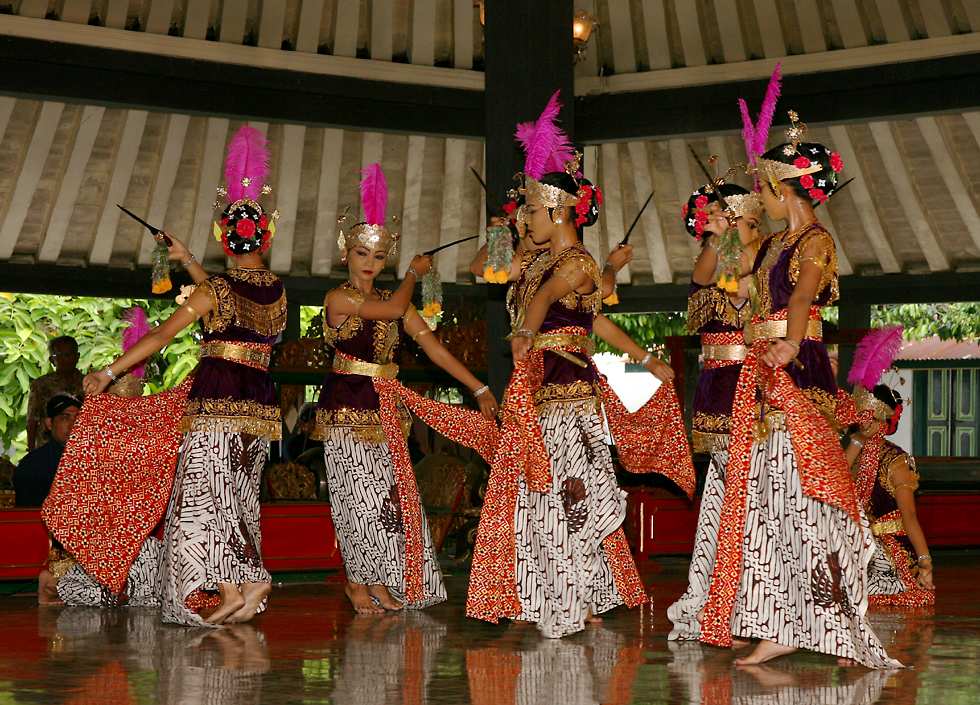
|

The main reason I visited this part of Java was to go to Borobudur, the most popular ancient site in Indonesia, flooded by both foreign and local tourists all day long. It's widely considered one of Asia's most spectacular archaeological sites, ranking right up with Angkor Wat in Cambodia. Borobudur is a large Buddhist monument built about 1200 years ago from 60,000 cubic meters of stone, which had to be carved and then transported to this spot. Political and religious developments led to its abandonment and after being buried by the jungle it was only excavated again in 1815, and a huge restoration project between 1973 and 1983 finally brought it back to its original glory. About two million stone blocks were used in its construction, structured in very symbolic fashion as ten levels, each representing a different stage in the passage of the soul from earth to heaven. Carved panels stretching all of the way around each level of the structure tell the story of Buddha's various incarnations, as well as the lives of his parents and others. A total of 432 Buddha statues adorn the structure, some visible in open niches and others inside the bell-shaped latticed stupas on the top three levels. |
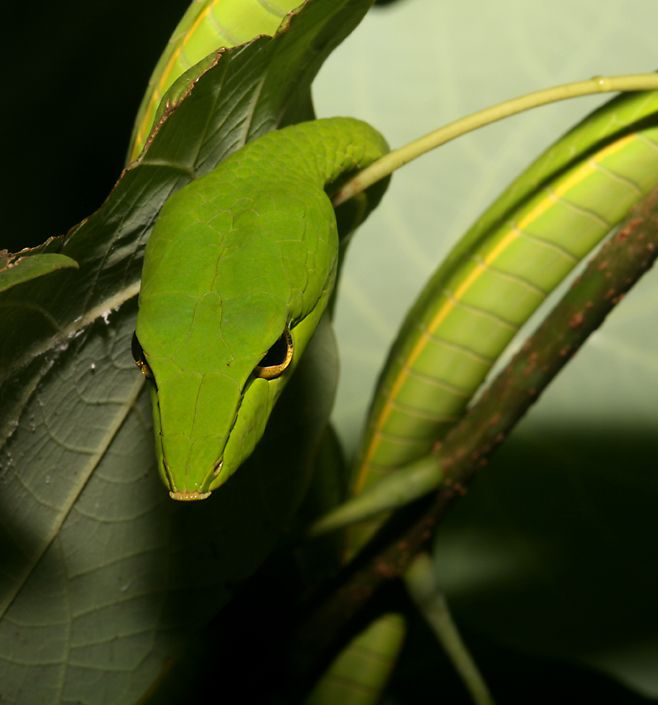
There are also plenty of monkeys visible in the forest, though I wasn't able to persuade any of them to keep still long enough for a photograph. A night foray into the pasture area to photograph some of the cacophonous chorus of frogs ended in near disaster as I teetered around with a flashlight in rubber boots which threatened to sink without trace into the thick mud churned up by the cattle. Although surrounded by the noise of the frogs it proved remarkably difficult to actually find any of them. My paranoia was rising rapidly due to the similarity of their croaking to human laughter, so I eventually called the quest off after I'd only taken a few photos. Almost falling over several times with the same 10 kilogram backpack of expensive camera gear also made me reconsider the sanity of my position. Paranoia of a different sort did lead to one very welcome discovery on my way out through the forest, in the form of this long-nosed whip snake, which is in the same family as the cobra. Fear of snakes while walking through the forest at night made for very slow progress, since I would take 3 or 4 steps forwards and then shine the light on the trees, bushes and undergrowth around me for a minute or so, before taking the next few steps. The pause between moving was essential not only to allow time to scan for insects and other critters to photograph, but also as a precaution against an accidental but potentially fatal encounter with a snake. I made a similarly slow nighttime walk along a river at Borobudur, moving just a few hundred meters over a four hour timespan, encountering not one but two snakes, one of which was completely submerged in a shallow part of the river. In my opinion, a result well worth the effort, but you can decide for yourself by looking at The Cold-Blooded Animals of Indonesia! |
|
I didn't come to northern Sulawesi for the scenery, though it has some of that too. The tall island here is called Manado Tua, but it's the flat island next to it, called Pulau Bunaken, which attracts most of the tourists to this area, drawn by the extremely good diving just offshore. I didn't go to either of these islands, but I did spend three days in Tangkoko nature reserve (the full name is Tangkoko-Batuangas Dua Saudara nature reserve), which is just to the right of center of this photo, where the land meets the bottom of the cloud bank. I spent three days in the reserve, photographing the local wildlife, and seeing but not photographing the local tarsiers, tiny and incredibly cute primates with relatives living in the Philippines. |
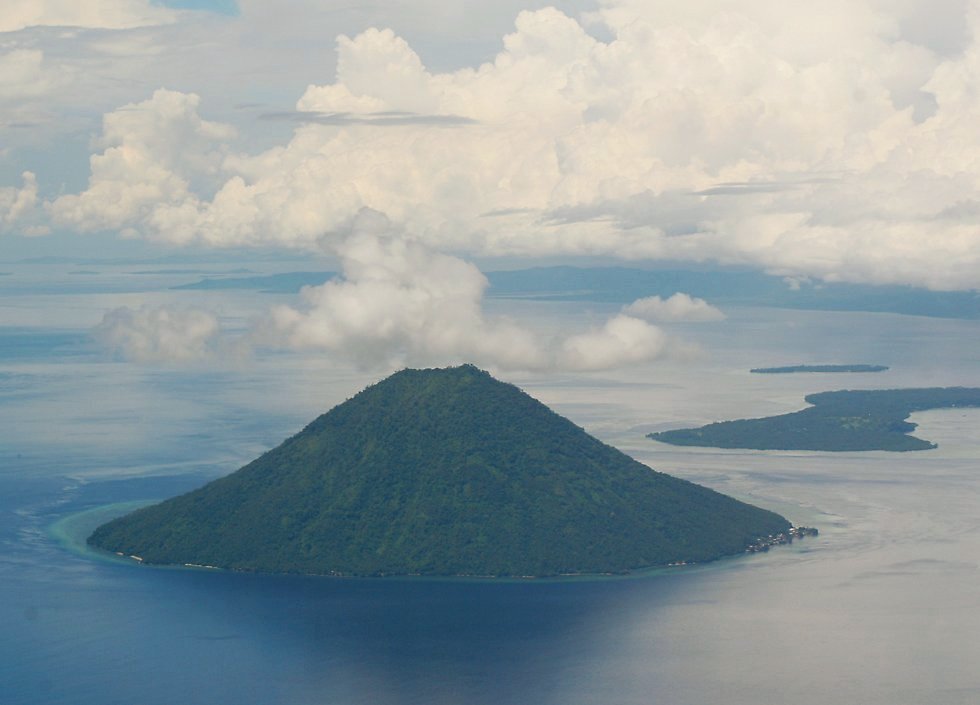
|
|
Although I didn't go to Pulau Bunaken, my main reason for visiting the area was to go scuba diving in an area called Lembeh Strait, visible here between the island of Pulau Lembeh where I was staying and the mainland. The diving off Pulau Bunaken is entirely conventional, gliding through crystal clear water over pristine coral reefs inhabited by vast shoals of unbelievably attractive fish. Lembeh Strait, on the other hand, is world famous as a center for "muck diving", which is all about diving through somewhat murky water (I joked about one daytime dive here that I was going to log it as a night dive) over a mud or dark sand sea floor to find the few fish which will live in this environment, most of which are not particularly colorful and indeed are usually either plain or actually ugly. As an indication of what to expect, the first muck dive I ever did was in the Philippines, at a site called "Basura", which is Spanish for "garbage". So why would otherwise sane people travel around the world and spend their vacation diving in muck? |
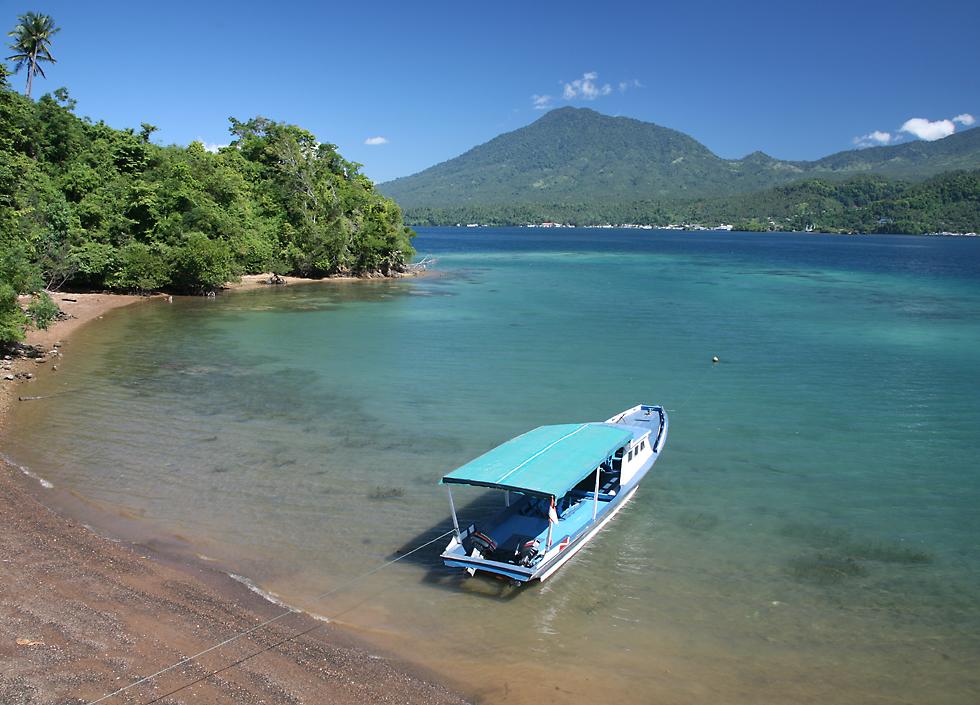 |
|
The answer is that there's ugly and then there's UGLY! You'll find more weird fish here in a week than you'll find on a conventional coral reef in a year. This particular beauty is called a bearded ghoul, but I also saw sea horses (for the first time ever), two different species of the very rare Rhinopias less than 10 meters apart, as well as flying gurnards, frogfishes and a large assortment of nudibranchs or sea slugs with extraordinary shapes and colors. Unfortunately all of the photos I took on the first day of diving were ruined because of a lens malfunction, and I only did one more day of diving before I had to skip out of town, in order to avoid a run-in with the notoriously corrupt local police force, a long story which I won't recount here! So I had to make the trip back again the next year, so you can still see the Wildlife of Lembeh Strait. |
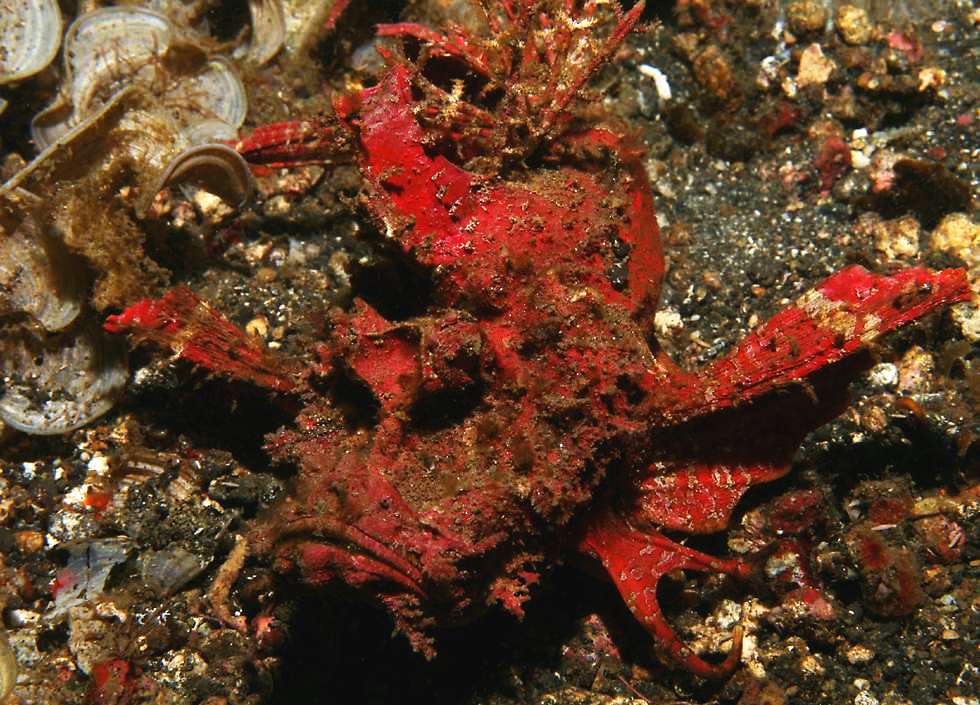
|
